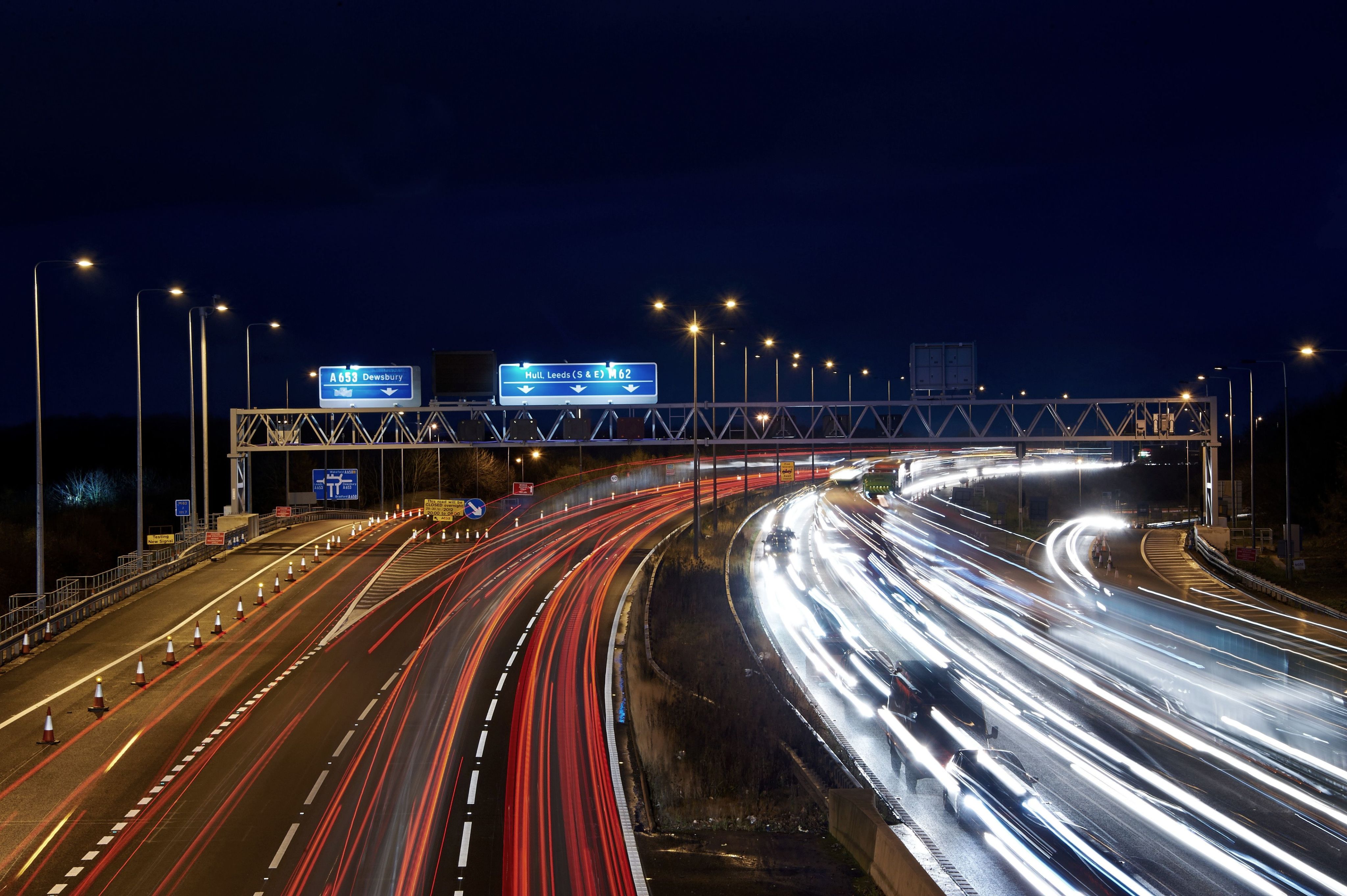ARE SMART MOTORWAYS SAFE?
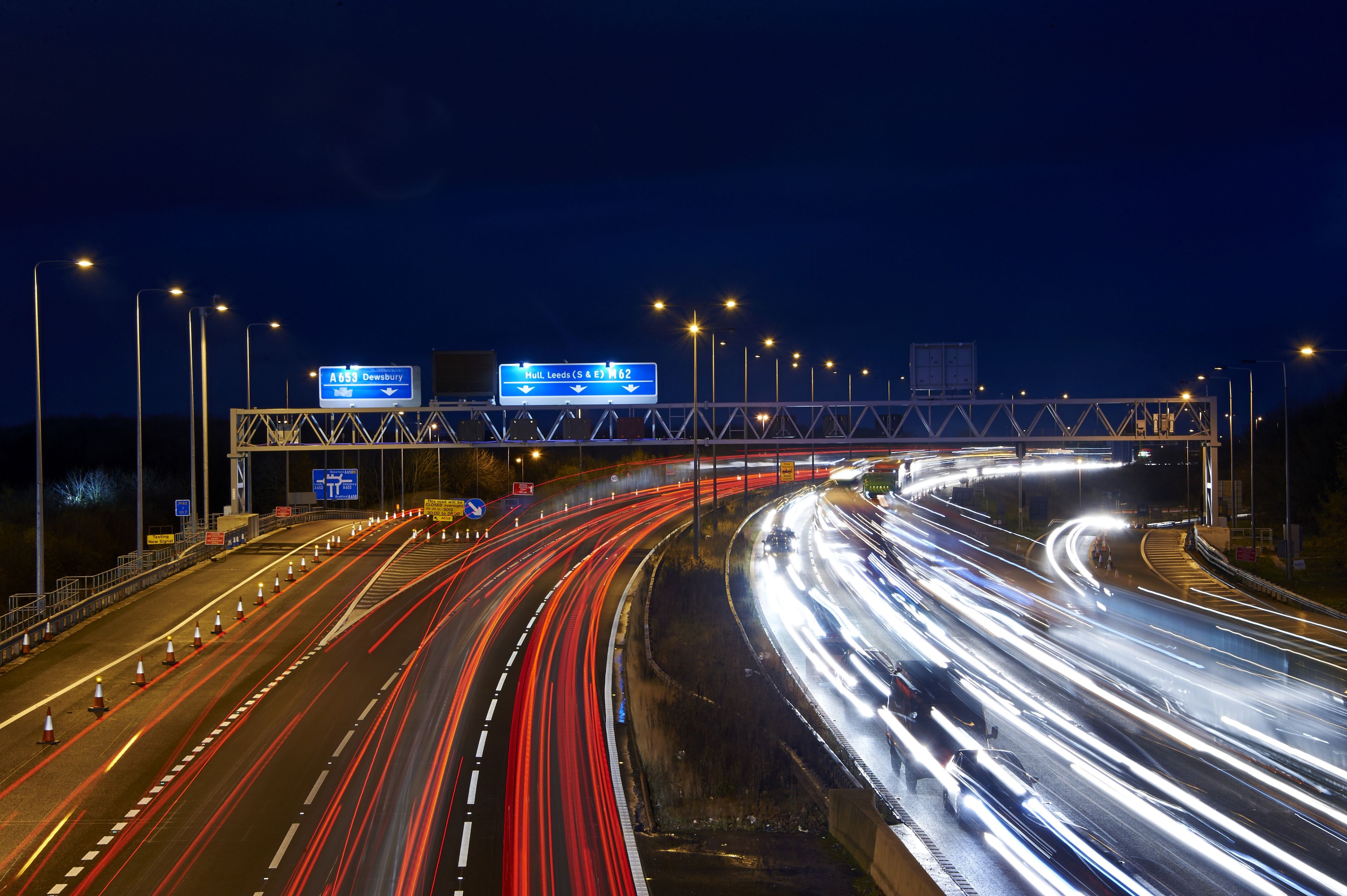
When we climb into a car, we like to imagine we can zoom to our destination. But so does everybody else, and there's only so much road to share between us. With vehicle numbers rising faster than the capacity of the road system, it's ever harder to keep the wheels rolling.
For more than a decade, on a growing slice of its motorway network, the UK has been trying a new method – utilizing the spare 'hard shoulder' emergency lane for traffic. It's a decision which has had some success – but has also led to confusion, injury, death, bitterly-fought campaigns and, ultimately, a cease-and-desist command from no less than the prime minister.
To mark UN Road Safety Week, CGTN Europe explains the background to the policy, examines the controversy it has unleashed – and takes to the road to find out what it's like first-hand.
This is the story of smart motorways.
What is a smart motorway?
Heavy traffic is a weighty problem. Idling cars increase pollution; idle drivers cut productivity. Yet still the number of cars on the road increases. In the UK, road traffic soared in the early 2000s and by 2050 it was predicted to increase by as much as 60 percent.
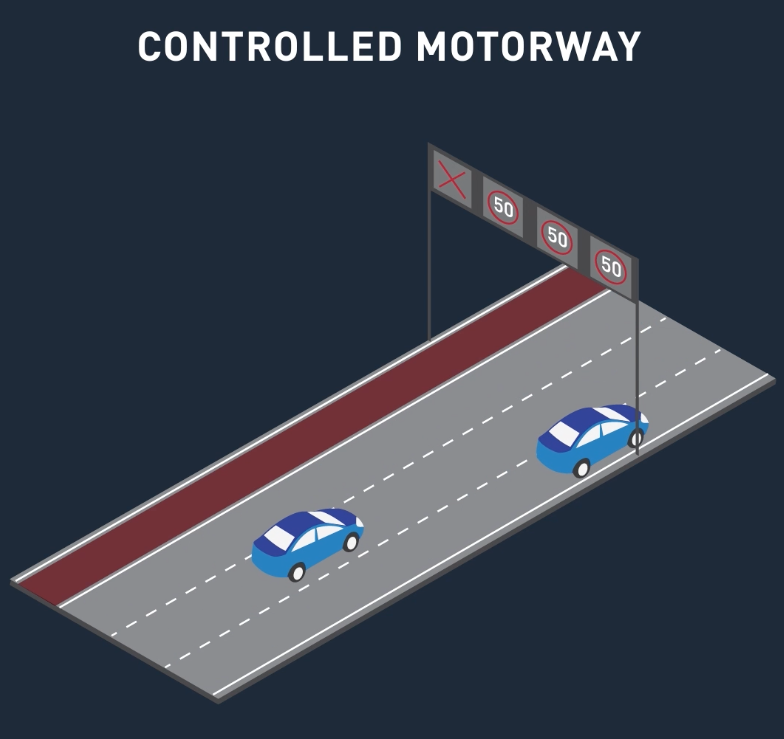
Congestion was becoming a hot-button issue, but widening roads was expensive and unpopular across the political spectrum – from urban ecological activists to rural conservatives opposing the expenditure and intrusion.
Motoring has always been a payoff between speed and safety, ever since the first cars were preceded by men carrying red flags. Speed is sexier than safety but no manufacturer, let alone government, has yet had the chutzpah to trumpet “We’ll get you there faster – if you get there at all.”
Still, the Highways Agency (later rebranded Highways England, nowadays National Highways) announced a 2006 trial on the M42 near Birmingham, in which the shoulder would be used for traffic at busy times, as directed by signs above the road.
Congestion was becoming a hot-button issue, but widening roads was expensive and unpopular across the political spectrum – from urban ecological activists to rural conservatives opposing the expenditure and intrusion.Small refuge areas were built alongside the shoulder, roughly every half-kilometer or three per mile, while CCTV cameras every few hundred meters would monitor for breakdowns.
But as befits its title, the UK’s Royal Society for the Prevention of Accidents warned
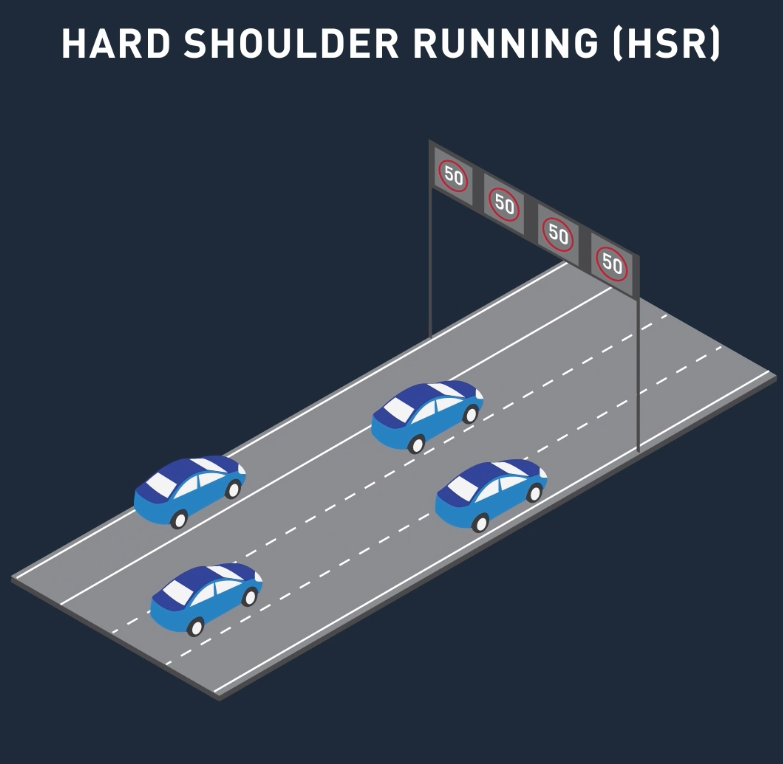
that "using the hard shoulder as a running lane may make it more difficult for drivers to find somewhere safe to stop if they break down as the emergency refuges are only spaced at intervals along the motorway.”
Nevertheless, the trial was declared successful, unquestionably increasing capacity without the impact (and cost) of physical widening. In 2010 the new UK government approved the roll-out of smart motorways.
Dynamic Hard Shoulder Running (DHSR) was implemented in several areas, with the shoulder lane still separated from the others by a solid white line to indicate that it is sometimes a safe refuge. In some places, where the traffic is frequently heavy, the concept evolved from using the safety lane sporadically to permanently – All Lane Running, or ALR.
Smart motorways feature frequent overhead gantries with electronic signs above each lane. These inform motorists of altered speed limits – designed to increase safety and reduce traffic jams by slowing traffic behind them. It is reliant on the technology, with cameras - and later Stationary Vehicle Detection (SVD) systems - alongside human operators to spot any lane closures necessary due to accidents, breakdowns or other obstructions. Which is all fine as a theory, until the system fails.
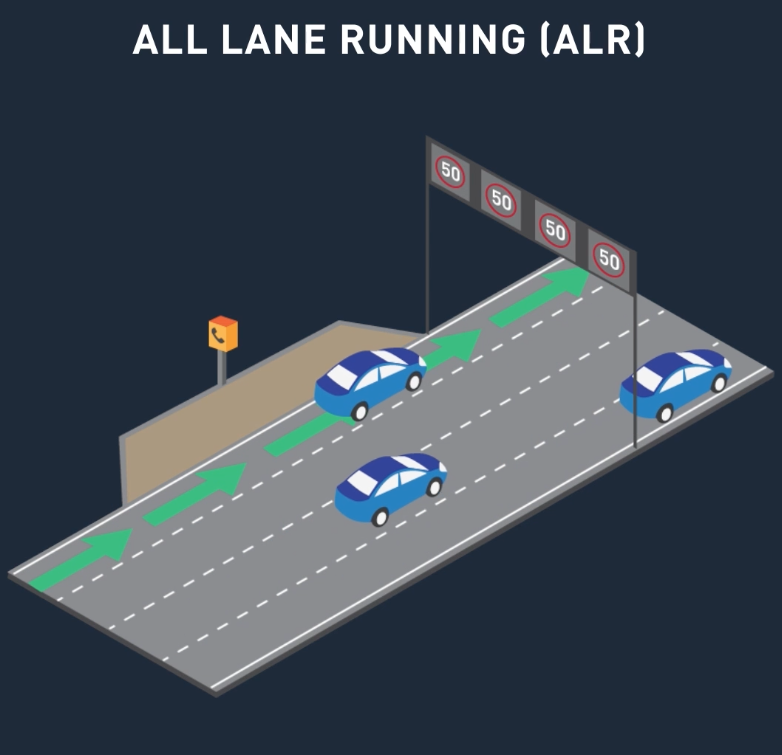
Victims of a lethal danger
Friday June 7, 2019, didn't get off to a good start for Jason Mercer. Driving to work on the M1 near Sheffield, he'd had a minor collision with a van.
"It was just a minor bump," his wife Claire tells CGTN. "A bad start to a Friday."
Now 42-year-old Jason and the other driver, 22-year-old Alexander Murgeanu, needed to pull over to swap insurance details. But this was an ALR section of motorway, without a refuge lane.
"There's CCTV footage of both parties traveling further down the road to find a safer place to stop," says Claire. "But they couldn't. And it's your legal obligation to stop after an accident, so eventually they just pulled over where they could.
"They couldn't get their vehicles out of the live running lane because of the crash barrier, and they couldn't get over the crash barrier because of a 30 foot drop on the other side of it. And so they were stranded in a live running lane on a Friday morning on the M1. And then the obvious happened."
The stranded vehicles should have set off a swift closing of the nearside lane of the motorway, but this did not happen. Six minutes after stopping to exchange details, Jason Mercer and Alexander Murgeanu were hit by a heavy goods vehicle and killed.
"It was a lorry," says Claire, Jason's widow. "It’s almost always HGVs, because they can't maneuver the same as a Ford Fiesta. And even limited to 56 miles an hour [90 km/h], which this one was, it just couldn't maneuver in time and it plowed into them bodily.
"You can imagine the catastrophe that caused," she continues, unflinchingly. "It was across all four lanes of the motorway. And even then, the technology didn't pick up that there was an issue, and it relied on members of the public phoning in and saying 'For the love of God, close the motorway.'"
But closing a motorway was not always something that happened as quickly as drivers might think – or hope. A March 2016 report for Highways England analyzed CCTV footage and found that for the ALR section between junctions 25 and 26 of the M25 – London’s orbital motorway – the average time between a vehicle stopping in a live lane and being verified was 17 minutes and 1 second.
Until a stationary vehicle is noticed and the lane closed by the overhead signals, anyone in or alongside the vehicle is – to use the words of Edmund King, president of the venerable AA motoring association – "a sitting duck."

Jason Mercer. /Claire Mercer
Jason Mercer. /Claire Mercer

Claire and Jason Mercer. /Claire Mercer
Claire and Jason Mercer. /Claire Mercer
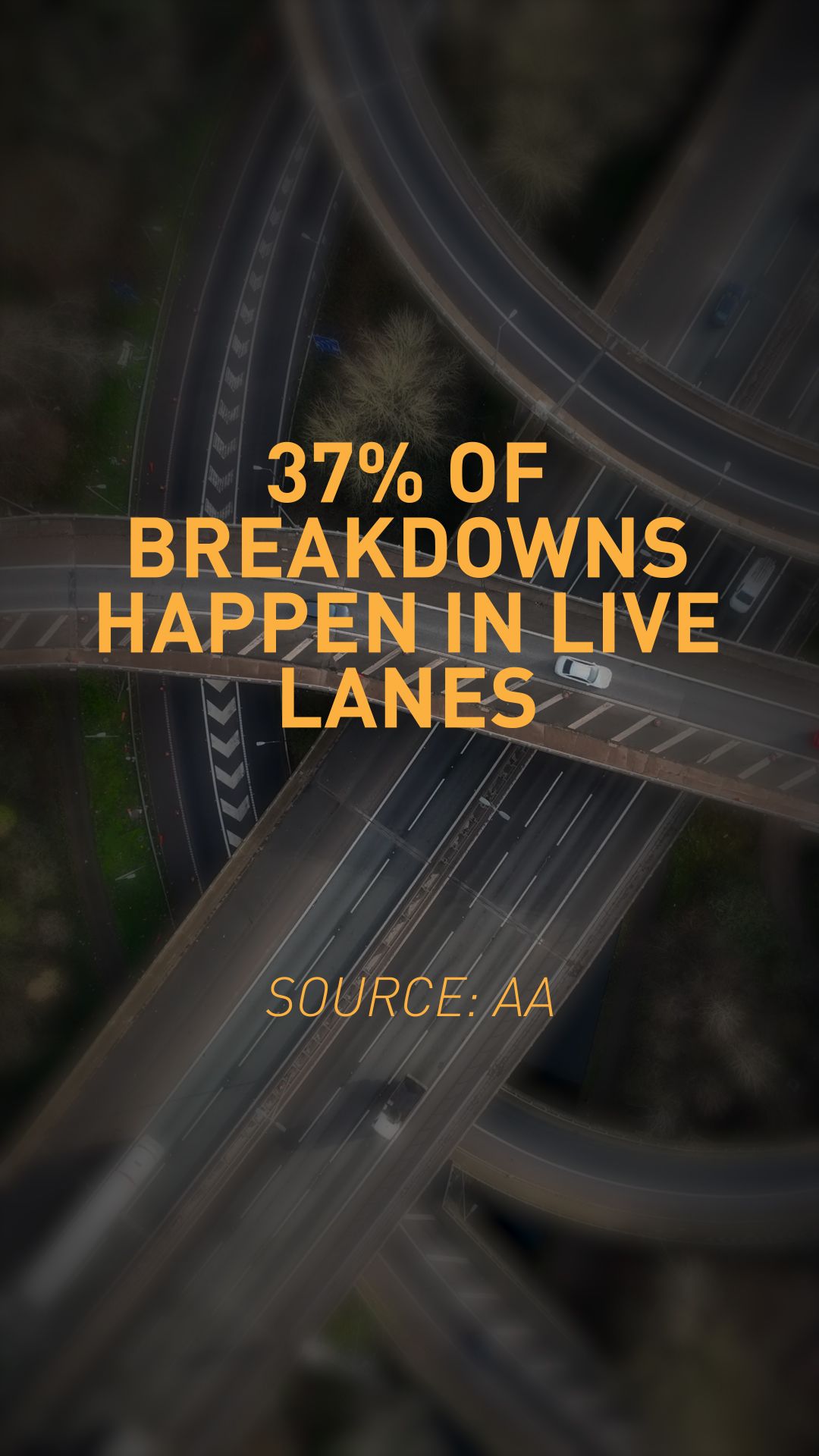
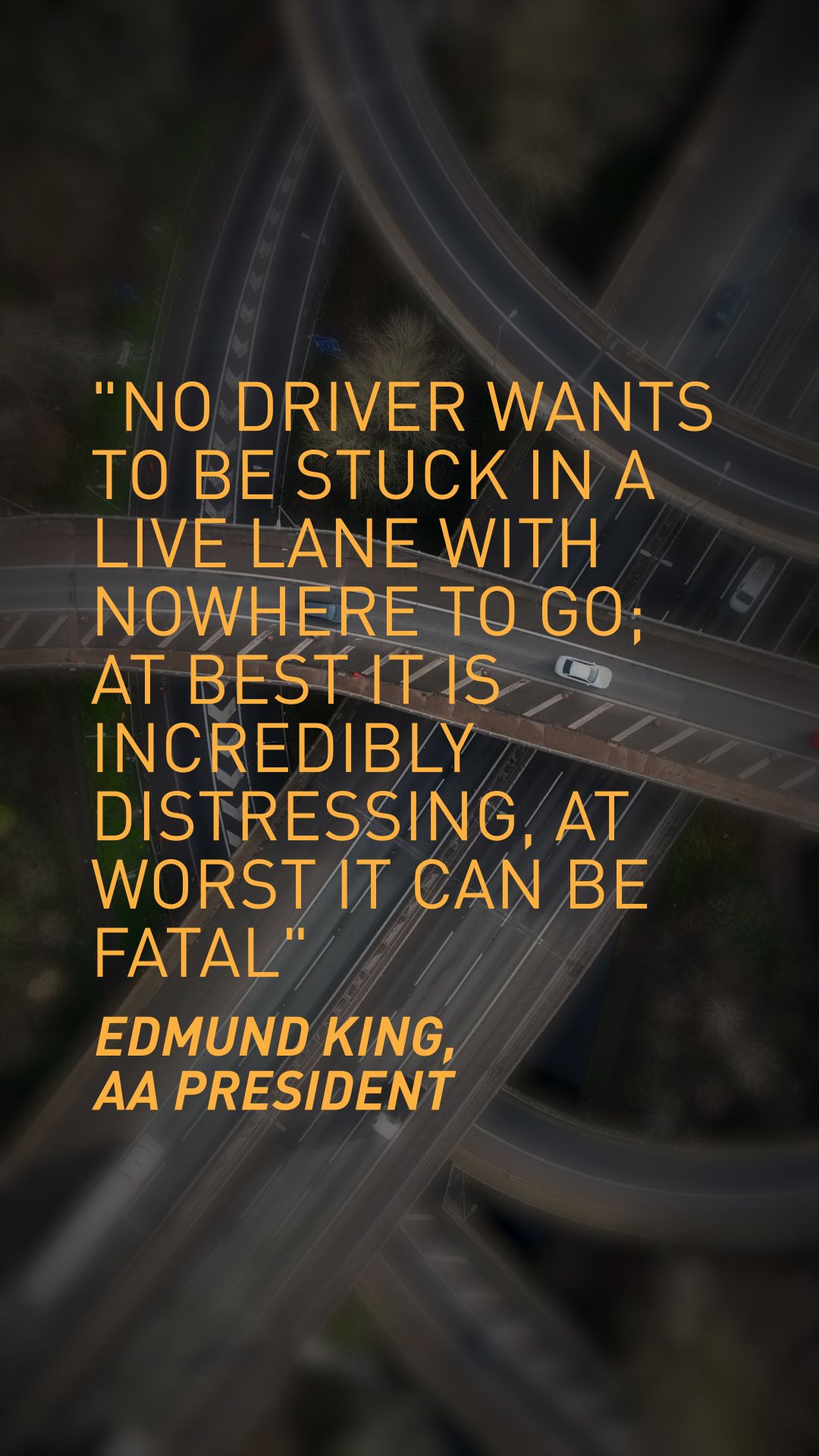
Confusion and ignorance
From the start, smart motorways have been a confusing concept for the public to grasp.
There's the difference between the initial 'dynamic' temporary shoulder usage and the later, permanent ALR implementation. There's the way motorways can change from one system to another. There's also the fact that the whole smart motorway idea isn't just about using the lane, but about obeying the overhead signage.
The confusion isn't helped by the name itself, a somewhat generic term only adopted in 2013, after a brief dalliance with 'managed motorways.' Before then the system was known as Active Traffic Management or ATM, an abbreviation already occupied by cash machines.
Even now, 17 years after its first trial implementation and 13 after it was green-lit to be used wherever necessary, the system often isn’t fully understood. CGTN Europe headed to Fleet service station, on a smart motorway section of the M3, to ask members of the public what they thought – and what they knew.
Asked to define a smart motorway, Steve (a regular driver – "I do about 30,000 miles [50,000km] a year") said "It's a motorway that's been designed to increase capacity during peak times, on the basis that you lose the hard shoulder, which is there originally for safety." That's an accurate description of a dynamic smart motorway.
Martin, another regular driver, also defined it accurately – "a motorway where they've taken the hard shoulder to create an extra lane" – while Terrence nailed the reasons behind it: "It's an answer to making the motorways bigger without too much upheaval and cost."
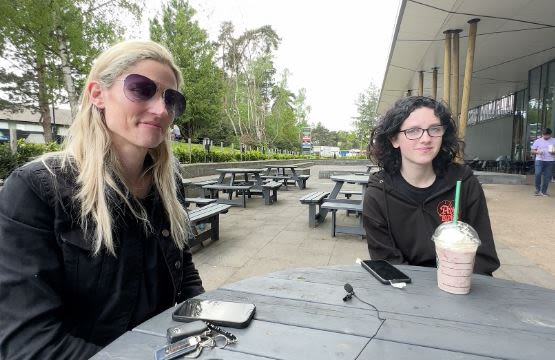
Sarah and Jules, Fleet services. /CGTN
Sarah and Jules, Fleet services. /CGTN
Sarah and her companion Jules, however, couldn't define a smart motorway – "Honestly no, I couldn't" – and furthermore weren't even aware they were driving on one. It's a situation Steve would sympathize with, believing there is a lack of public information.
"I understand how it works because I'm on the road all the time and it's part of my job," he said. "It's got to be about making people aware of it. Lorry drivers and professional [drivers] like myself, we understand the rules of the motorway, so it must be about educating people."
Terrence, a less regular driver, agrees. Asked if he would know what to do if he saw a red X signal above his lane – which would mean get out of it, as soon as possible – he said "No. There’s not been enough advertising on that, I wouldn’t know what to do." Sarah and Jules were equally in the dark, and admitted they wouldn't know not to drive in that lane.
Claire Mercer can't blame them – "I'd never even heard the term 'smart motorway' until my husband was killed on one," she says. "Why wasn't there a complete oversaturation? Why wasn't it in the newspapers, on social media, on online news, TV news, just everywhere? Why were there no adverts?"
Forming the arrestingly-named pressure group Smart Motorways Kill, Mercer lobbied for a publicity campaign – and was horrified by what she saw.
"After 50-odd people were dead, they started doing these ridiculous TV and radio adverts to the tune of Go West – they made it 'go left.' They had men dressed as flies, squashed on the windscreen. In almost every one of these incidents, the people were stood on the road and they were hit by a HGV.
"My husband was squashed on a windscreen."
Death on the road
Sadly but inevitably, Jason Mercer and Alexander Murgeanu were not the only people killed in live-lane accidents.
In January 2020, after a Freedom of Information request, the government revealed that 38 people had died on smart motorways over the previous five years – and the numbers could have been much higher.
The same request revealed that on just one section of the M25 the number of near misses – defined as an incident with "the potential to cause injury" had risen five-fold since the April 2014 removal of the hard shoulder, from 72 in the previous five years to 1,485 in the subsequent half-decade. It also revealed that one warning sign on the same stretch had been out of action for 336 days.
By the time these numbers were made public, many people had turned against smart motorways. In November 2019, a survey by the motorists' association RAC said that 68 percent of drivers believed taking away the hard shoulder put motorists whose vehicles break down in a live lane in danger, a month after AA research polled 15,000 drivers of whom 71 percent thought ALR sections were more dangerous than a traditional motorway.
In January 2020, Police Federation chairman John Apter said "We were told the technology would be so advanced that if there was an obstruction the system would pick it up, help would be dispatched and the gantry would flash up a warning closing the affected lane," adding that police "have been completely misled and a poor system has been introduced."
Tellingly, another leading critic was the former government minister who'd approved the smart motorways roll-out in 2010. Mike Penning had monitored the 2006 Birmingham pilot scheme, with its regular safe refuge areas every 500 meters. But as the roll-out continued, Penning was horrified to find the refuges were being spaced farther apart – in some cases, much farther.
"The original M42 managed motorway pilot in 2006 with Emergency Refuge Areas (ERAs) every 500 meters worked well," acknowledged AA president Edmund King. "But after that the goalposts were moved and the roll-out began with ERAs at every 2,500 meters."
Also in January 2020, Penning and a cross-party group of MPs published a report accusing the then Highways England of "a shocking degree of carelessness" and calling for an end to smart motorways.
"They are endangering people's lives," said Penning. "There are people that are being killed and seriously injured on these roads, and it should never have happened."
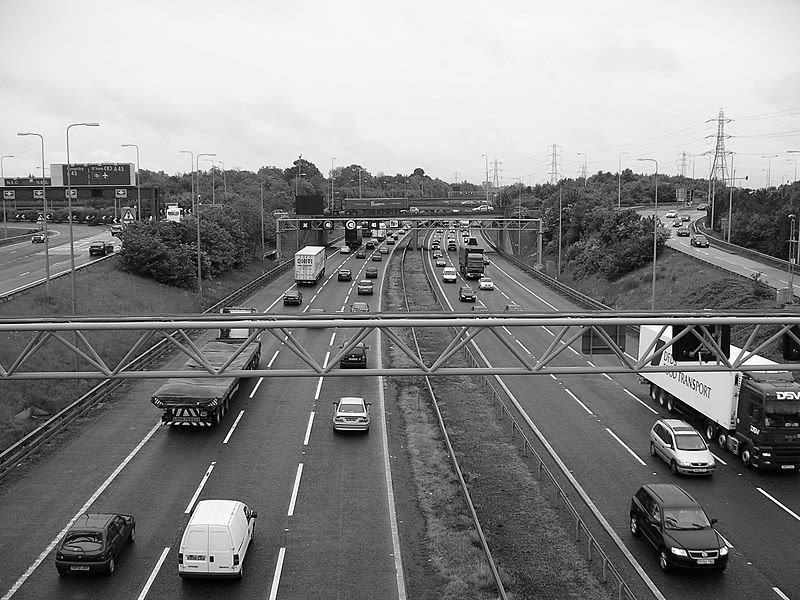
DEV DARAN
On May 31, 2018, Neel Daran was critically ill in Birmingham Children’s Hospital. The brain-damaged nine-year-old suffered intractable epilepsy, and doctors declared him unlikely to survive the night.
With a heavy heart, Neel’s mother Meera called for his brother Dev, eight, to be brought in to say goodbye. Dev’s grandfather packed him into the Toyota Yaris and started to drive him from the family home in Leicester.
On that sad journey, Dev’s grandfather stopped on the M6, and 45 seconds later the Toyota was hit by a lorry. Dev was killed instantly. In a sickening irony, the youngster’s body was then taken to the hospital where his brother was fighting for life.
In January 2022 Meera Naran was awarded an MBE for her work in campaigning for road safety. She dedicated the award to Dev, and in May 2022 – on the fourth anniversary of his death – she launched a new campaign.
Dev’s Law calls upon the UK government to make it compulsory for all new vehicles to be fitted with Autonomous Emergency Braking, which detects a stationary object and stops the vehicle. Similar legislation already exists in the EU and Australia.
"Our eight-year-old little boy didn’t reach home and I don’t want any parent to lose their loved one in such a sudden and tragic way,” she said. “I made a promise to myself that other parents would never have to get that phone call.”
Shortcomings of technology
The deaths needn't have happened. The safety of smart motorways is dependent on rapid-reaction technology, and better tech didn't just exist – it had already won an award.
In October 2018, six months before Jason Mercer and Alexander Murgeanu were crushed to death on the M1, the great and the good of the highways and transport technology industries had gathered at the plush Royal Lancaster Hotel, overlooking London's Hyde Park, for the annual Highways Awards. The Best Use of New Technology award was given to Stopped Vehicle Detection (SVD) – a joint project between Highways England and various tech firms.
The awards write-up in Highways magazine is part explanation, part admission. "The need for an automated SVD system that could detect stranded vehicles in a few seconds was identified as it is impractical for control center staff to continuously monitor every CCTV camera on a 24/7 basis."
Overriding the need for constant human monitoring, SVD employs radar units spaced along the roadway. Engineering firm SNC Lavalin, a Canadian engineering firm involved in the SVD joint project, says that the units "employ a fully enclosed rotating scanning mechanism that continuously scans 360 degrees around the radar four times per second."
According to Highways magazine, SVD "is programmed to provide an alarm to a Regional Control Centre (RCC) after the vehicle has been stationary for 12 seconds. It then takes an average of 11 seconds for the RCC to investigate the alarm, and a further 50 seconds for the RCC to 'classify' these alarms and respond accordingly. Therefore, overall it takes just over one minute with SVD radar to detect and verify the presence of a stationary vehicle on the live carriageway."
Closing a live lane within a minute or so is evidently much better than the 17-minute reaction time cited in the 2016 report. But that's of no use to Claire Mercer and other victims of live-lane crashes in the delay between SVD's invention and its rollout.
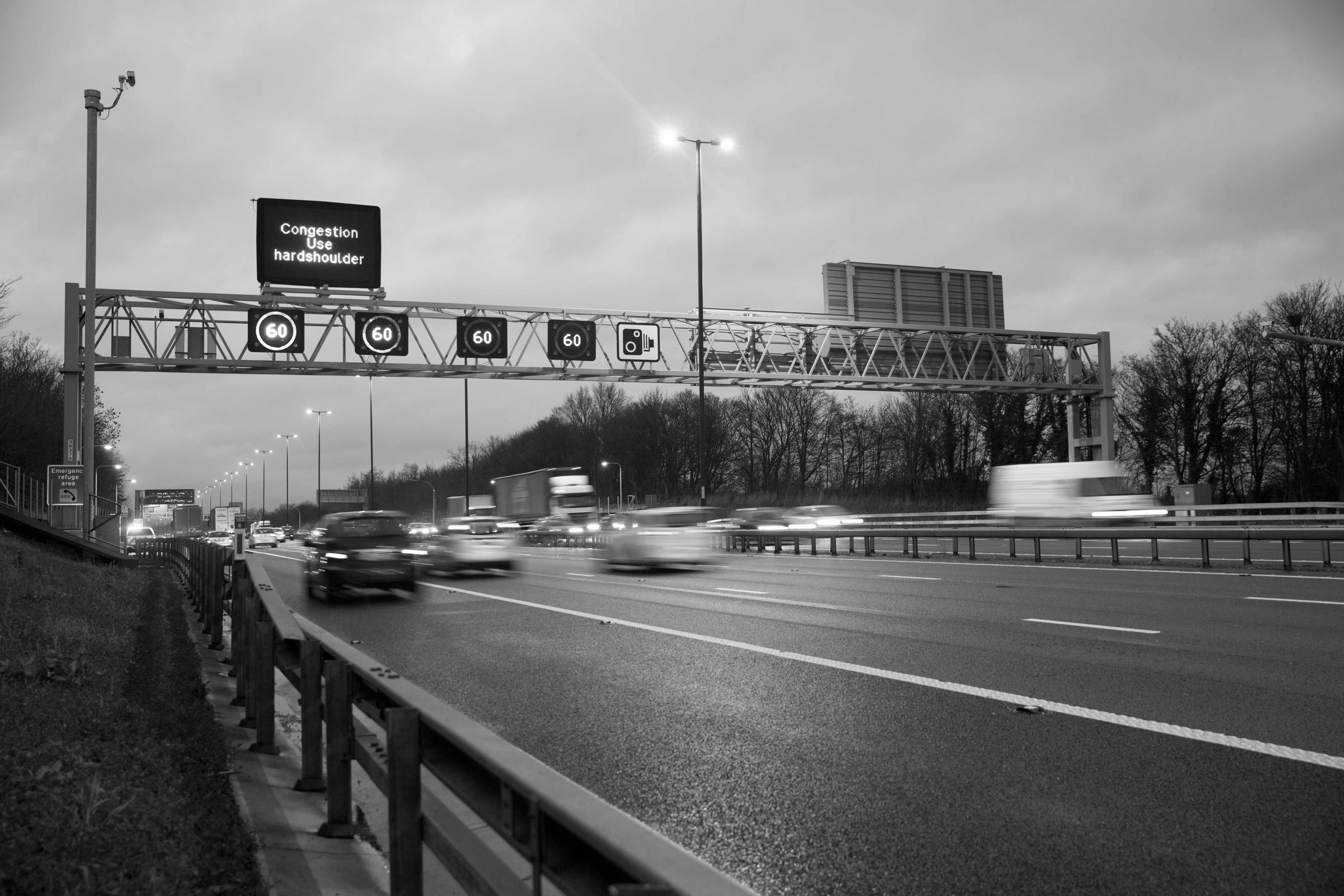
Contrasting roll-outs
Smart motorways proliferated across the network. The Highways agency noted that "By the end of 2020, we created almost 500 miles [800km] (includes both sides of the road) of additional motorway capacity without building new roads and taking extra land. We also estimate that the increased capacity that has been delivered by smart motorways has so far resulted in journey time savings of over 28 million hours."
However, there was a much slower rollout of SVD and Motorway Incident Detection and Automatic Signaling, also known as MIDAS – a handy acronym, although hardly a glowing recommendation if we believe Aristotle’s teaching that the Phrygian king's magical ability to turn everything he touched into gold meant he died of starvation.
It's much easier to repaint a line than to approve, obtain and install technology. The January 2020 report from Mike Penning's cross-party group stated that of a smart motorway network approaching 650 kilometers, just 40km had in place the SVD system that had won an industry award back in October 2018.
A government review was underway and in March 2020 the UK Transport Secretary Grant Shapps published a smart motorway action plan. One notable intention was to reduce the maximum distance between safe refuge areas, which had stretched from the original 500 meters to 2,500 meters; the target was 1,200 meters "where feasible" and 1,600 meters at most.
Shapps' plan proposed ending the confusion between the temporary DHSR and permanent ALR systems by simply converting all the dynamic versions to permanent all-lane affairs by March 2025 – not exactly the change that campaigners had been crying out for.
It also tasked the then Highways England with rolling out the SVD radar system across all ALR motorways "within the next 36 months." A year later, in a March 2021 first-year progress report, Highways England's acting CEO Nick Harris brought that forward.
"We had already committed to ensuring the system was fitted on all lane running smart motorways by March 2023," announced Harris. "Today we commit to complete that work six months early, by the end of September 2022."
It was a bold commitment, albeit one three years too late for Jason Mercer and Alexander Murgeanu. And there was a problem: the technology didn't work properly.
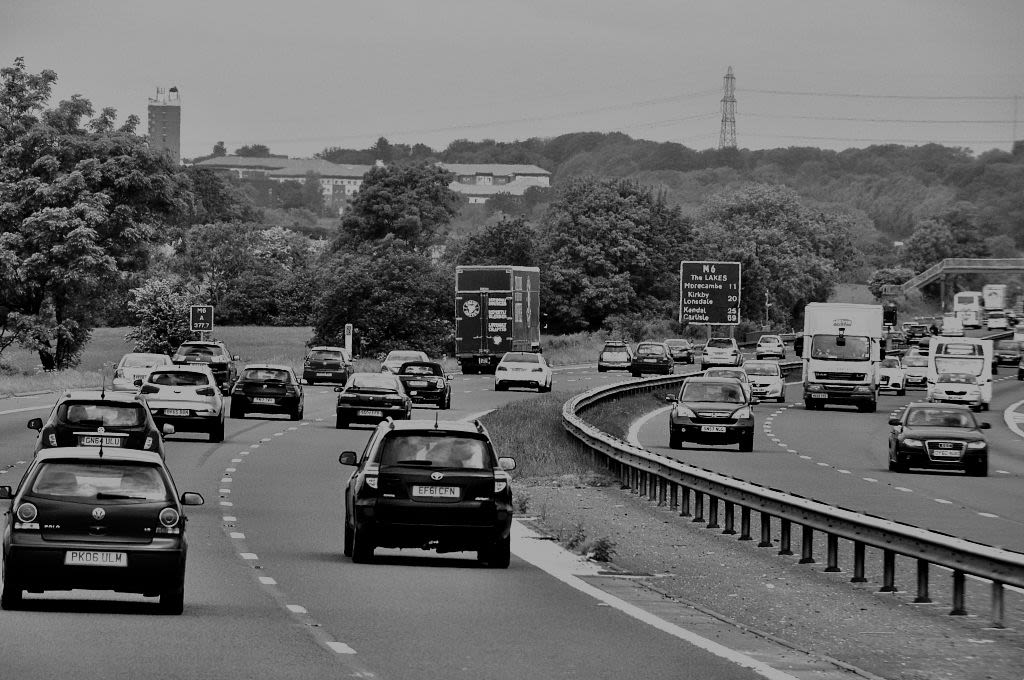
DEREK JACOBS
A Friday morning in March 2019, just north of London. Tools engineer Derek Jacobs, 83, kisses his wife Sally goodbye, gets in his VW van and drives up the M1 to work.
Just outside Sheffield, his van suffers a burst tire. Jacobs pulls over to the side of the motorway – a live lane, because this is an ALR section. Just 44 seconds later, a member of the public reports the stationary van – but there is human error in passing on the alert, and it takes eight minutes for oncoming traffic to be alerted.
Three and a half minutes after stopping, Jacobs is attempting to climb over the barrier onto the verge, as per government advice. But as he does so, his van is struck by a car driven by Jean Scripps, 77, and he is crushed between the vehicle and the barrier.
At a 2023 inquest, assistant coroner Susan Evans says it was "immediately apparent that, had there been a hard shoulder, this incident would not have occurred," but adds "That said, there are many roads in the road network, including dual carriageway A-roads, that are subject to the national speed limit and do not have the benefit of any hard shoulder."
Sally Jacobs does not attend the inquest. "If I'd been there, I would have screamed at the coroner," she said. "There is no doubt in my mind that Derek would not have died that day if he had been able to pull over on to the hard shoulder.
"He did everything right and he still lost his life. I will treat the coroner, the government and everyone else who is to blame for this with the contempt they deserve."
Tech failures
In December 2022, government watchdog the Office of Rail and Road (ORR) released its first annual assessment of smart motorway safety. The reading was not entirely pleasant for Harris and his agency, by now renamed National Highways.
SVD had indeed been installed across the all-lane running network by September 2022, but it was missing one in three live-lane stops. Data showed that it was detecting only 67.5 percent of stopped vehicles, way below an 80 percent benchmark missed in all five regions, which varied from 59.6 to 79.6 percent.
False detections were far higher than the 15 percent target, ranging from 63.8 to a huge 83.5 percent across the regions – which, the report said, created extra workload for operators and reduced driver trust by triggering false alerts.
Perhaps most worryingly, SVD wasn't helping the agency hit its detection time target of 20 seconds, with four of the five regions taking between 43 and 65 seconds. It was enough for ORR Chief Executive John Larkinson to say SVD was "not working as well as it should… it's clear National Highways needs to urgently improve its performance in this area."
Claire Mercer at Smart Motorways Kill is more forthright.
"National Highways are trying to make the tech appear better than it is," she tells CGTN. "I get control room operators contacting me anonymously all the time, because the tech is just not up to the job – it cannot react fast enough. If it was a computer, you'd have taken it back to the shop a long time ago. And yet there's hundreds of thousands of lives depending on this every day."
"This is putting lives at risk," agreed MP Iain Stewart, chair of the Transport Select Committee, saying the "chilling" stats "raise considerable concerns about the performance of National Highways in protecting drivers on smart motorways."
Stewart also cited as "deeply concerning" the findings that in some areas vehicles remained undetected for more than a minute after stopping: "Every second counts when cars, coaches and lorries are driving at up to 70mph and there's no hard shoulder."
Indeed, a vehicle moving at 70mph (112 km/h) covers 1.8 kilometers per minute. In the 65-second response time cited for one smart-motorway region, a stationary vehicle would need more than 2 kilometers of clear road behind it in order to avoid a potential accident.
"Breaking down in a live lane is terrifying enough," said the RAC's head of roads policy Nicholas Lyes, "but drivers must have confidence that the infrastructure is detecting them quickly so authorities can immediately close the lane."
AA president Edmund King went further, calling the figures "simply unacceptable" and reiterating his call for hard shoulders to reopen, at least until the technology is proven.
"For smart motorways to be truly smart and safe then the technology behind them must be fully effective," King said. "If there are doubts about the technology, then the motorways are not smart and we should revert to tried and tested methods."
National Highways pledged to meet the performance specification for SVD "in a way which our operators can manage" by the end of June 2023. But by that time, the whole future of smart motorways would change.
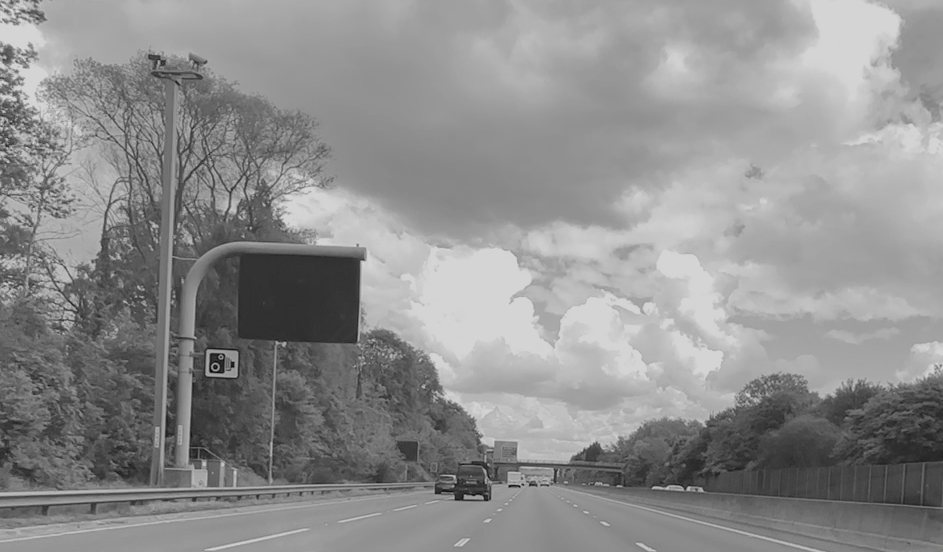
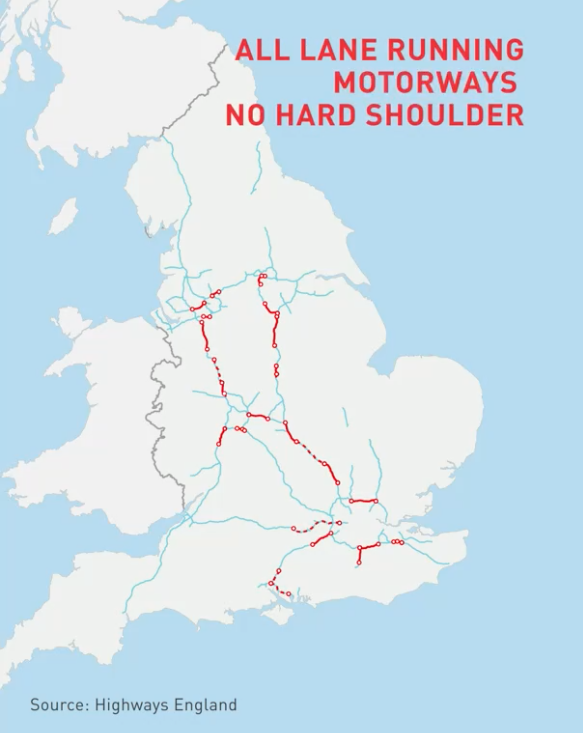
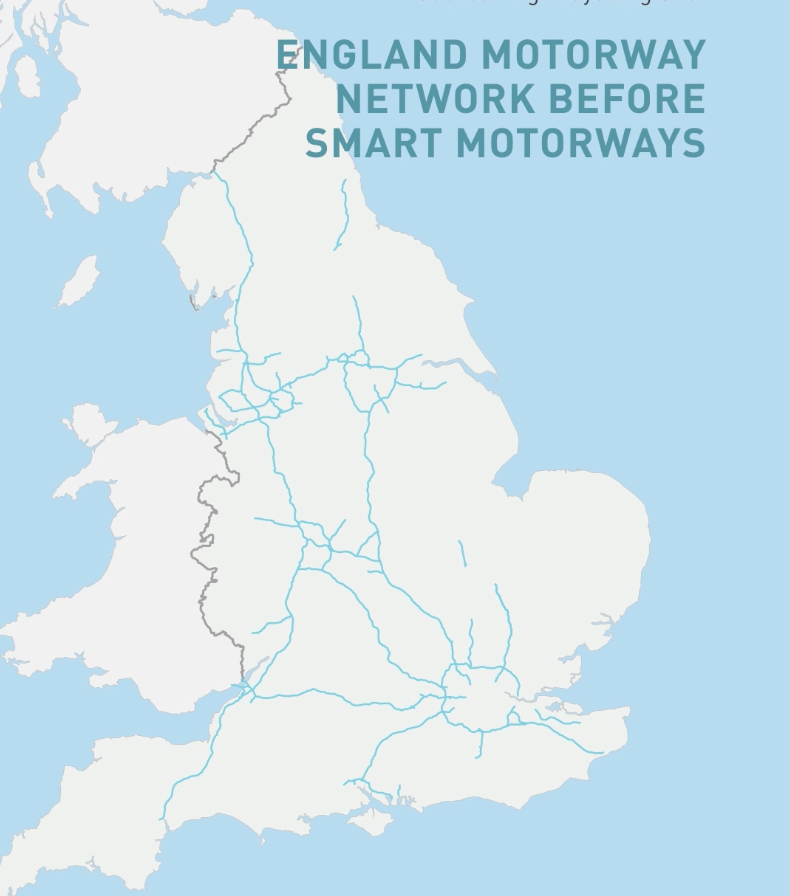
Forgetting the human factor
The draining of public confidence in smart motorways had an unexpected effect: some drivers started to ignore safety advice.
In an emergency, if possible drivers are supposed to seek the first available refuge area, which as we've seen may be up to 2,500 meters away. But a 2017 AA poll found that 32 percent would only be happy to drive 400 meters in search of a refuge area, while a further 23 percent would only drive for up to 800 meters – meaning that less than half of drivers would travel even a third of the possible distance before pulling up.
By the time the RAC polled members in 2022, 49 percent of respondents said they simply avoided using the first lane on ALR sections, with 68 percent of drivers saying they'd seen others doing this. Asked why, 77 percent said they feared encountering a broken-down vehicle.
As the study notes, this lane-avoiding behavior "completely undermines the very reason so many hard shoulders have been permanently turned into running lanes: to increase road capacity."
That wasn't the only reaction to smart motorways. Part of the reason for variable speed limits was to make sure that cars slowed rather than speeding towards an incident – but if this means drivers never see the incident, they start to believe it didn't exist. And sometimes, it didn't.
Remember those figures on false detections? Way above the 15 percent target, they were as high as 83.5 percent in some areas. And while it can be argued that it's better to be safe than sorry, this created something of a "boy who cried wolf" reputation for the overhead alert system – as Martin told CGTN at Fleet services.
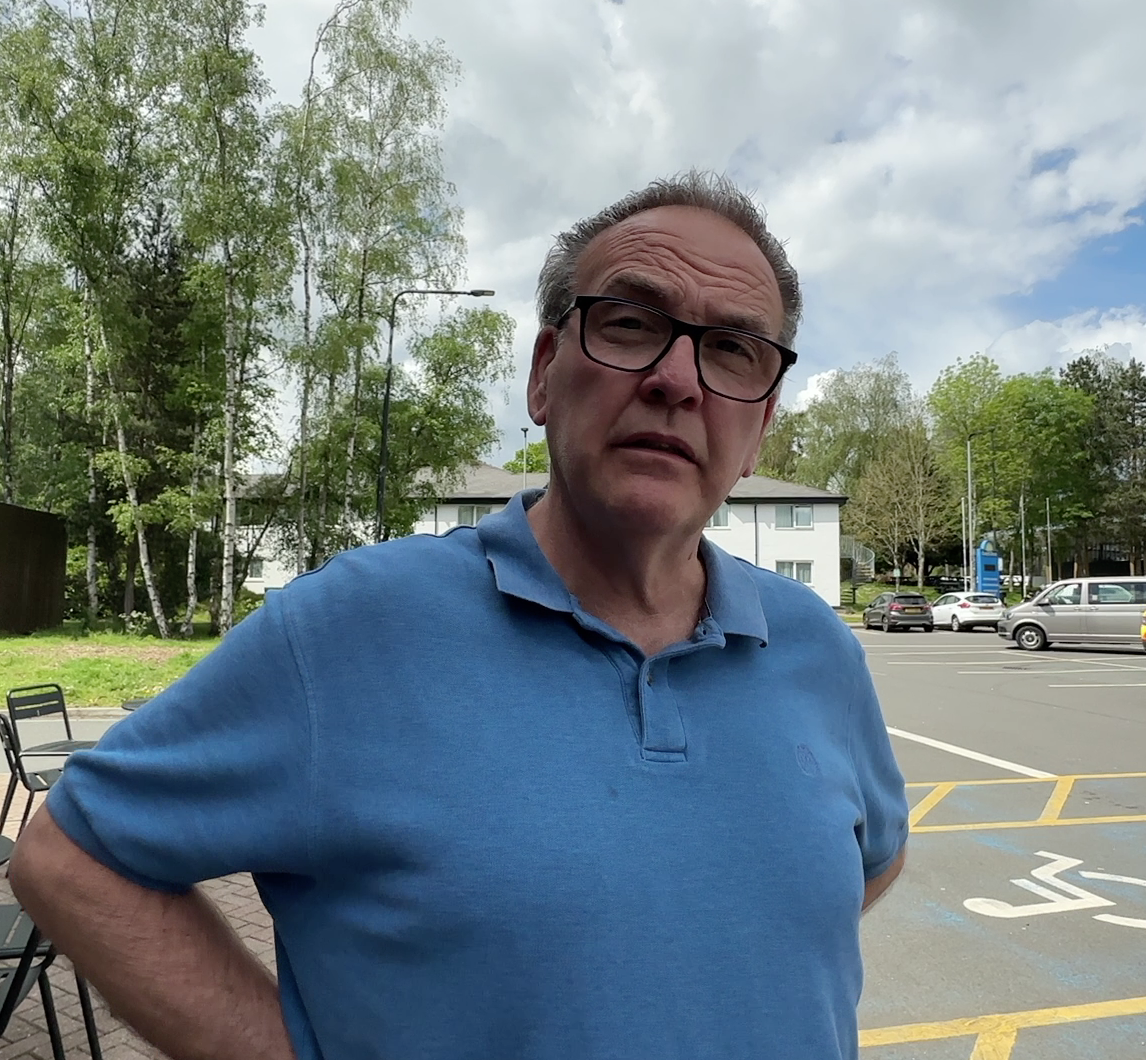
Martin, Fleet services. /CGTN
Martin, Fleet services. /CGTN
"I've numerous times been through a variable limit because there's an accident, obstruction or whatever, and you go for mile after mile at a very low speed," he recalled. "So what does that do? That breeds in certain drivers a familiarity – they decide it's going to be clear."
Martin felt the system needed closer monitoring and quicker responses. "When the speed is taken down to 40 [mph, 65km/h] because there's an obstruction, they need to manage that, not just leave it up at 40 for hours afterwards because that breeds contempt and that leads to people being in the wrong lane at the wrong speed, at the wrong time."
What's worse is that flouting speed limits spread to ignoring the red X signs that could signify a stationary vehicle.
"It's open to abuse and you constantly see drivers ignoring it, which represents a real danger," said Martin. "I see it up and down the country. You don't even have to be able to speak English to work out what a red X must mean. It's not confusion – it's arrogance."
It's also actionable. National Highways says that 'more than 90 percent' of drivers comply with the red X, but that still leaves a lot of illegal and potentially lethal driving. Since June 2019, cameras have been able to identify guilty drivers, triggering fixed penalties ranging from fines and license points to court appearances.
Surrey Police began punishing camera-detected red X offenses in November 2019 and by February 2023 had doled out 9,427 – an average of 350 per month or comfortably more than 10 per day.
For vital minutes, that red X may be the only thing protecting a vulnerable driver.
"I understand what the red cross means," experienced driver Steve told CGTN at Fleet services. "I see it, I avoid it, I stick to the limits. But there is a bit of a fear that one day, if my car packed up…
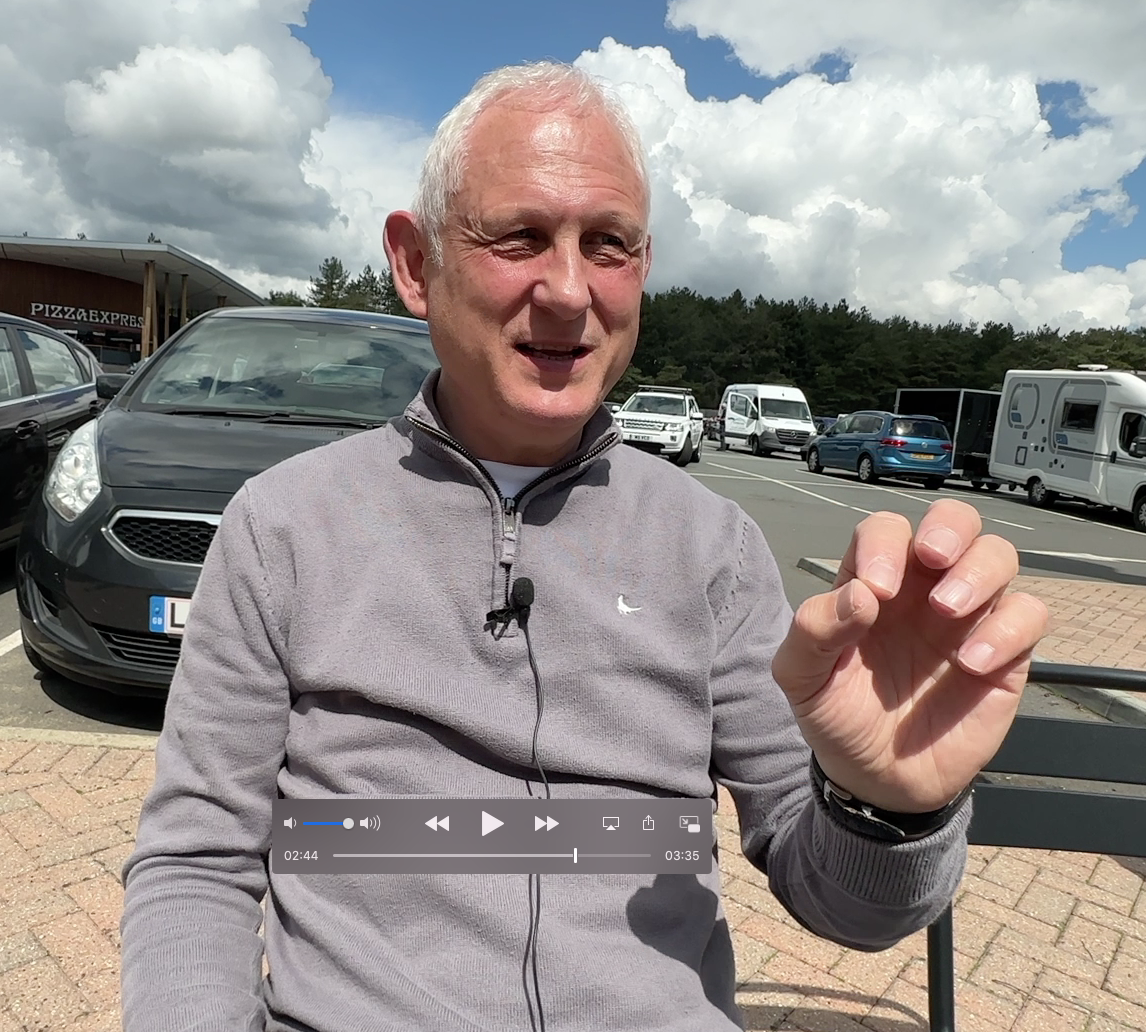
Steve, Fleet services. CGTN
Steve, Fleet services. CGTN
"From my experience, I think that if I did break down, the space between the emergency areas is too long, so you're going to be stuck between them. You can't just naturally get into a safe area. I don't think you'll be lucky because there's not enough of them.
"If I'm stopped in the left-hand lane, some camera's got to see it, it's got to be reported. In the meantime, there's cars and lorries still going up and down and you've got to get out in a live lane. It does get me concerned."
It's clearly something Steve has pondered during his long hours on the road, but at least that puts him at an advantage over Sarah and Jules. Asked what she would do if her car broke down, Sarah thought about it for eight seconds before replying – a time during which a car coming up behind her at the speed limit would travel a quarter of a kilometer.
"It's tricky," she said, "because you automatically think 'That's OK, I'll pull up on the hard shoulder…'"
Martin thinks the system has potential – but is currently dangerous.
"If it's managed correctly with the right amount of coverage, with the right amount of people, I think it can work. But unfortunately, it doesn't. There's no doubt: We're not safer. Whether you're the person that's broken down or you're managing and driving, it's not safer because it's not managed correctly."
He knows someone who's been stranded in a live lane. "They said the big problem was getting out of the vehicle just to get to safety, because within three or four feet [90-120cm], there's a vehicle going by at 70 miles an hour. Terrifying."
As for Terrence, he thinks it's fine "as long as you've got somewhere to go if you've got a failure on the car and you can pull it in safely." Told that drivers who can't reach a refuge area are advised to pull over and switch on their hazard lights, his response betrays the eternal problem of road transport: safety versus speed.
"I'm not entirely happy about that. But the bigger problem is the congestion on the motorways. It gives them an extra lane at minimum cost."
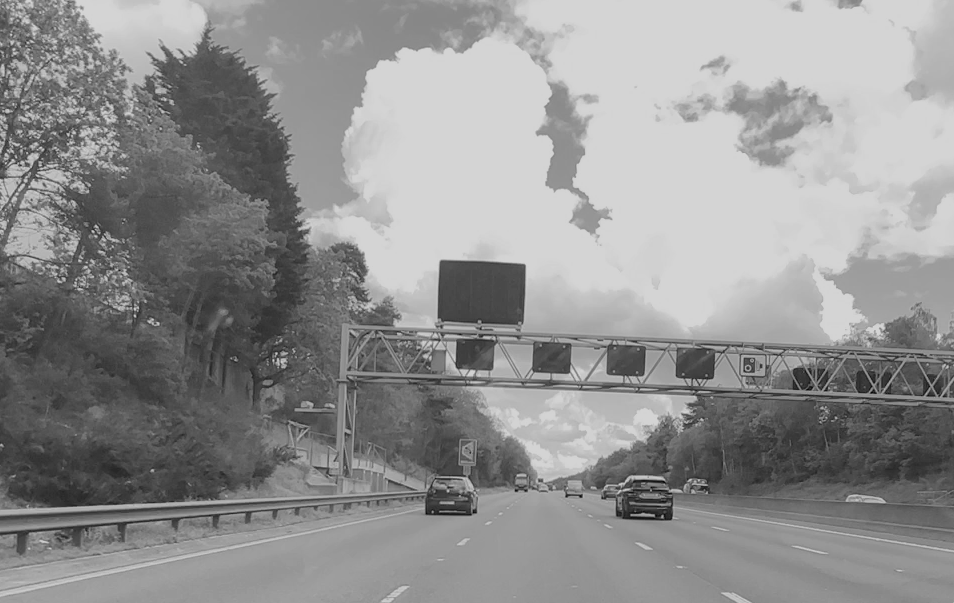
DAVID LEVETT
David Levett had cerebral palsy, but he had a carer. At around 6pm on Sunday January 28, 2018, the carer was traveling south on the M1 near Daventry in Northamptonshire, when he pulled up his Seat Leon in a live lane. The carer had stopped behind the broken-down Volvo of his brother-in-law, to pick up his brother-in-law and drive him somewhere safe while waiting for a recovery vehicle.
The carer switched on his hazard lights and told his brother-in-law to do the same. A witness driving in the next lane spotted the hazard lights flashing and moved one lane over to give traffic more room. But just after the stranded man climbed into the front passenger seat of the Leon, an HGV drove straight into the back of it.
"I kept thinking to myself 'He's going to move out, he's going to swerve out of the way' – but suddenly there was debris everywhere," the witness told a 2023 inquest in Northampton.
Levett had been in the back seat. The 53-year-old was rushed to Coventry's University Hospital with severe head and chest injuries and, following extensive surgeries, died on February 24. The carer sustained spinal cord and shoulder injuries, while his brother-in-law sustained head injuries and fractures to his femur and spine. Both have since recovered.
"If the hard shoulder had been available… it's quite possible that David Levett would not have died," said senior coroner Anne Pember. In a prevention of future deaths report, she told National Highways that action should be taken to prevent future deaths –and that she believed the company had the power to take such action.
Levett's sister Angela Mower said: "The government needs to look into these because people are still dying. Highways England keep reassuring everyone they are safe but clearly they are not."
Claire's campaign
At an inquest in January 2021, Sheffield coroner David Urpeth said the primary cause of death of Jason Mercer and Alexandru Murgeanu was the careless driving of lorry driver Prezemyslaw Szuba. Present in the room at Sheffield town hall, Claire Mercer burst into tears.
"He was prosecuted for the deaths, but I objected to that," she tells CGTN. "I didn't want that to happen because if National Highways hadn't removed the hard shoulder, he'd have been in an entirely separate lane."
Szuba agreed. "If there had been a hard shoulder on this bit of motorway, the collision would have been avoidable," he said via phone from prison, where he was already serving a 10-month jail sentence after admitting causing the two deaths by careless driving. "I would have driven past these two cars as it would be safer and they would have been able to come home safely and I would be able to come back home."
Sergeant Mark Brady agreed. The officer, who oversees major collision investigations for South Yorkshire Police, told the hearing: "Had there been a hard shoulder, had Jason and Alexandru pulled on to the hard shoulder, my opinion is that Mr Szuba would have driven clean past them."
Even coroner Urpeth agreed, to an extent. While primarily blaming Szuba, he said "as a finding of fact, it is clear a lack of hard shoulder contributed to this tragedy." He didn't stop there, saying "I believe that smart motorways, as things currently stand, present an ongoing risk of future deaths."
For Claire Mercer, that was a small but significant victory. "Somebody has listened and finally taken steps to address the use of these death-trap roads," she said after the inquest. "We have taken a first step today to protecting the lives of others."
She has continued to press for her own justice, making formal allegations of corporate manslaughter against the highways authority in January 2020.
"For the last three years, I've been trying to get National Highways held accountable for corporate manslaughter charges" she tells CGTN, before listing the doors she's had to bang upon.
"It took a year for the police to accept that it wasn't the Health and Safety Executive. Eventually, they prepared the case for the Crown Prosecution Service. The Crown Prosecution Service then took nearly a year to look into the case themselves.
"Before they'd even announced publicly that's what they were doing, National Highways' legal team sent the Crown Prosecution Service a massive, all-encompassing, very comprehensive defense. Eventually the CPS just agreed that National Highways do not owe the motorist a duty of care."
But soon, smart motorways would come under fire from a higher authority: the government.
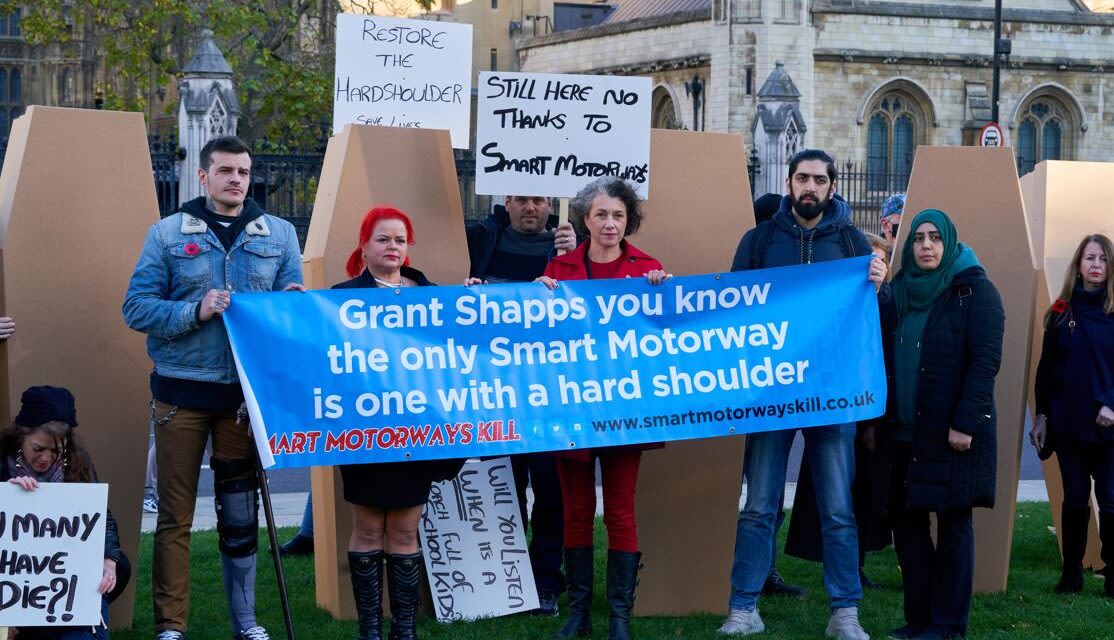
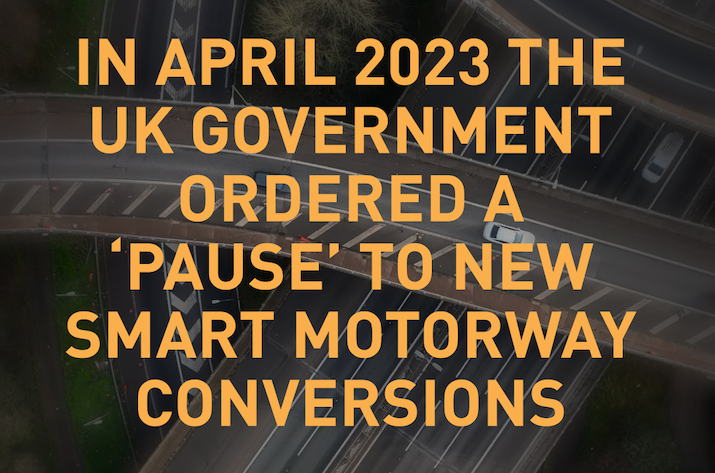
Turning against ALR
It's easy to imagine parliamentary committees as paper tigers, but sometimes they have teeth. A 2016 Transport Committee report on smart motorways warned that the trade-off on safety was an "unacceptable price to pay" for the motorways.
In November 2021, an updated report stated that the government's efforts since then still "do not fully address the risks associated with the removal of the hard shoulder." Further, the committee recommended a halt on the roll-out of ALR sections, citing insufficient data proving the economics justified the safety concerns.
Many are the recommendations that have been brushed aside by authority, but not if they run with the political tide. In January 2022, the UK government agreed to pause the roll-out of 11 ALR sections. And in April 2023, the government announced the cancelation of all new smart motorways – just as Prime Minister Rishi Sunak had pledged during his leadership campaign – over cost and safety concerns.
That decision encompassed 14 projects, the 11 on hold and three still in the planning stage, but not two projects on the M6 and M56 which were already more than three-quarters completed. The cutbacks were not extended to existing smart motorways or the retrofitting of radar tech and extra refuge spaces.
The decision also does not call for the return of hard shoulders to the 378 kilometers of existing ALR motorways, despite growing popular support for such a move. An RAC driver survey also published in April 2023 found that around 69 percent of motorists wanted the refuge lanes reinstated.
"Installing additional refuge areas and radar technology to help spot stricken vehicles is welcome and necessary, but for most drivers this doesn't go far enough," said RAC road safety spokesman Simon Williams.
"Many felt they were dangerous from the outset and now it's clear the government has totally lost faith in these types of road as well. Today, it remains the case that anyone unlucky enough to break down who can't get to an emergency refuge area remains incredibly vulnerable where the hard shoulder has been taken out."
Williams suggested that the government could monitor any increased congestion, although "this might be something drivers are willing to tolerate if it means they're kept safer, but another option could be to convert as many ALR stretches as feasible into dynamic hard shoulder schemes.
"These roads have a good safety record and the backing of as many as seven-in-10 drivers according to our research. If the overhead red-X sign was illuminated whenever the hard shoulder was closed, this could also help make these roads even safer."
For Claire Mercer, the task remains simple: "We've only ever had one bullet point on our agenda, and that is the return of the hard shoulder on every single different type of motorway."
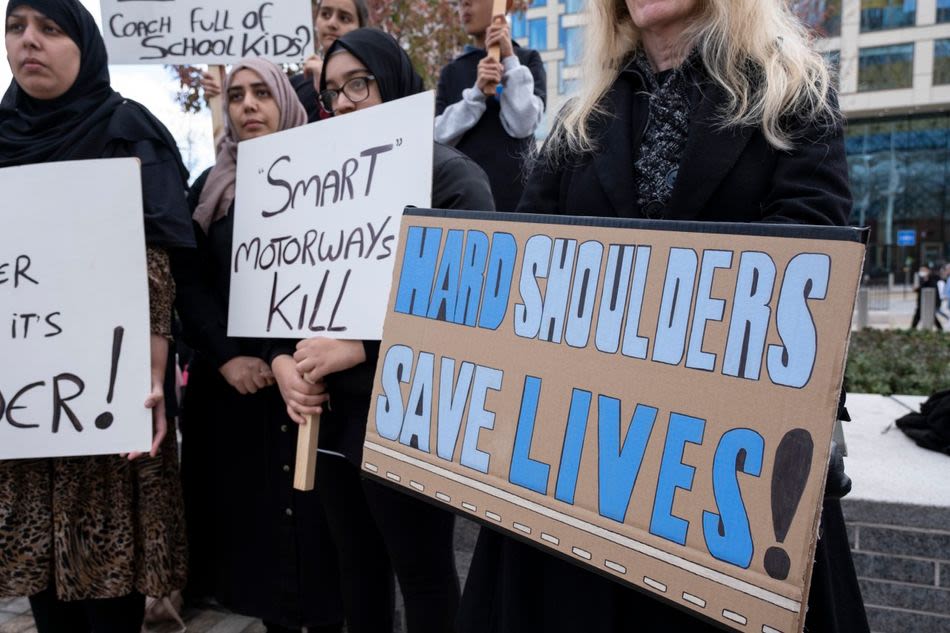
NARGIS BEGUM
When the car lost power, Mohammed Bashir knew what to do. After all, the 69-year-old was a taxi driver.
He maneuvered the Nissan Qashqai over to the left-hand side of the M1, near Woodall Services in South Yorkshire, and pulled over. He put his hazard warning lights on, climbed the barrier and called his daughter Saima Aktar, whose car it was, to ask where in the car she kept the relevant recovery documents.
He'd borrowed the Nissan for the drive down to Derby because it was roomier, giving some physical comfort to his wife Nargis Begum. The 62-year-old grandmother suffered from arthritis, so she hadn't been able to climb over the barrier.
Then, 16 minutes and 21 seconds after the Nissan had pulled up, a Mercedes smashed into it, and another vehicle crashed into that, and Bashir saw his wife lying on the ground. "I don't want to describe what I saw, as it is still too upsetting," her widower told an inquest in September 2022.
"I brought the car to a standstill in what I thought was the hard shoulder but was actually a live lane," he said, noting that he was "unaware of any changes to the Highway Code, nor the fact that the motorway had changed to a smart version."
At Doncaster Coroner's Court, senior coroner Nicola Mundy said the lack of a hard shoulder contributed to Nargis Begum's death, but so did the fact that none of the drivers of the 153 vehicles which passed the stranded car before the collision alerted National Highways to its presence.
Mundy noted the testimony of a witness who said he assumed cameras would pick up the incident. A number of National Highways directors and employees, including CEO Nick Harris, told the coroner that this was not practicable and the coroner asked whether more could be done to educate the public about this fact.
"The conclusion that the absence of a hard shoulder and the absence of any drivers telling National Highways about the stationary vehicle both contributed to Mrs Begum's death surely calls into question the whole concept of 'smart' motorways," said AA president Edmund King. "Roads should not be designed with the lives of drivers dependent on other drivers reporting a breakdown in a live lane."
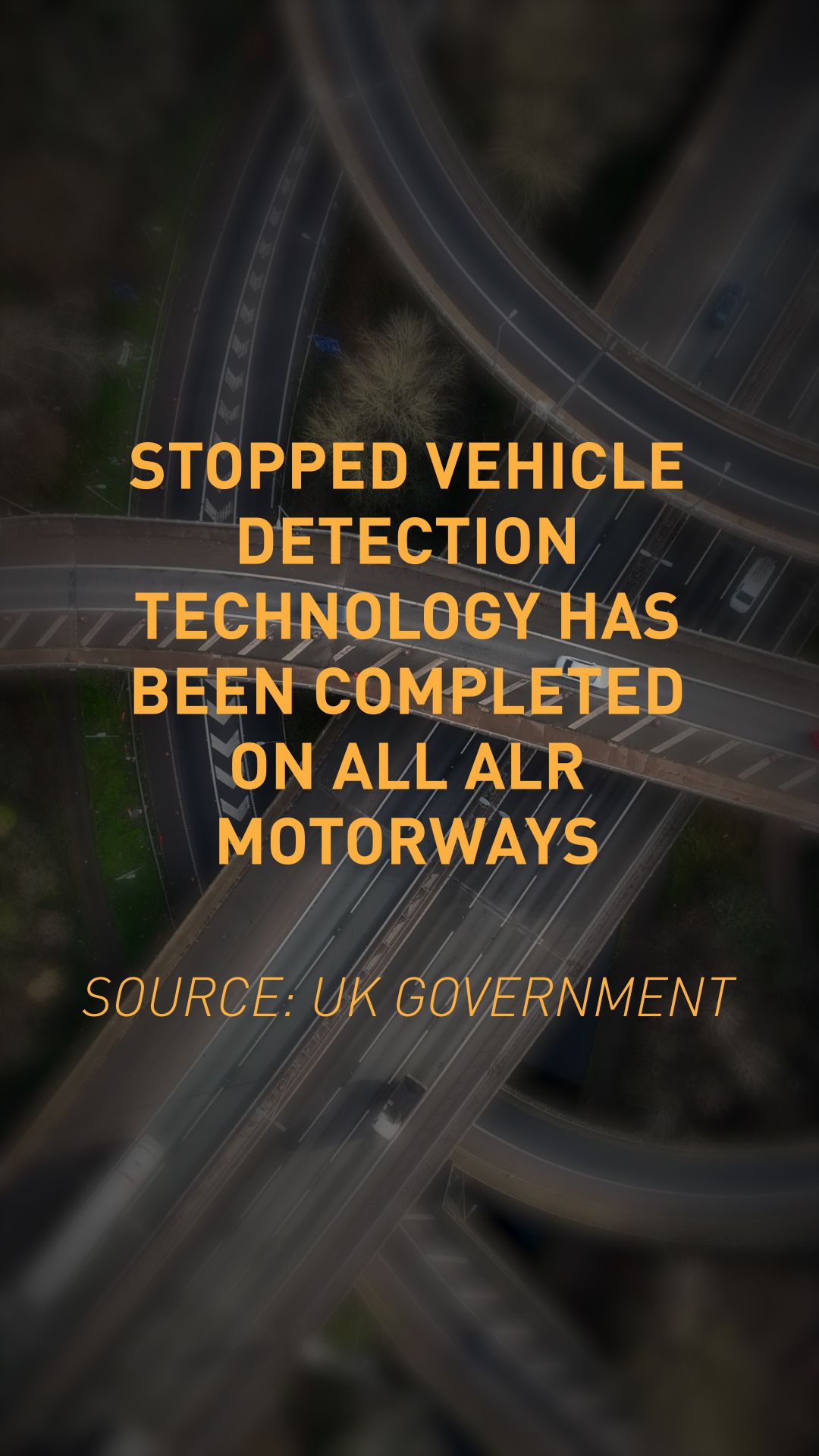
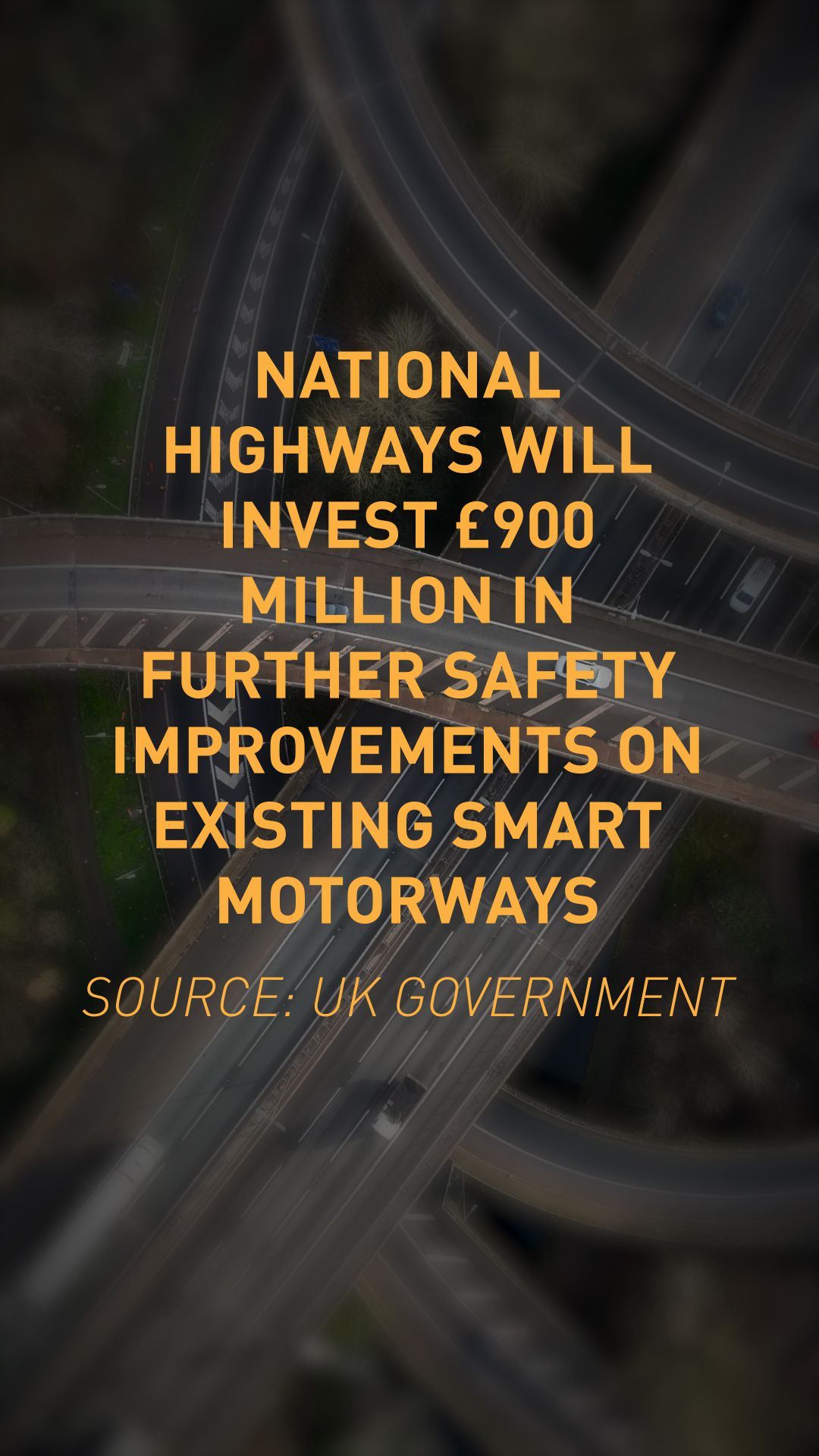
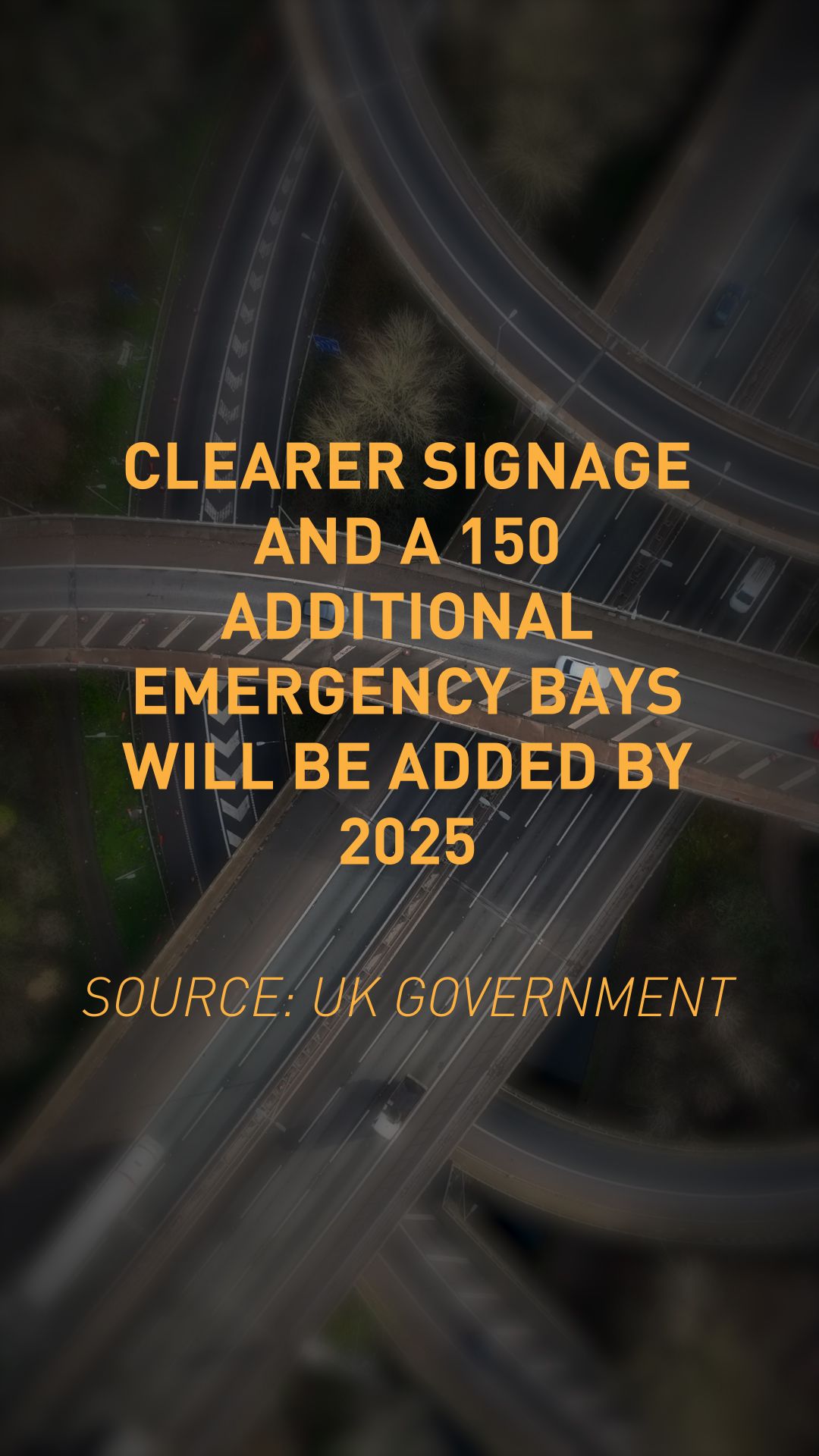
Are smart motorways safe?
Authorities are still seeking the age-old balance between safety and speed. But these days, "speed" is not necessarily about retaining the right to unfettered acceleration. In an economy largely based on road travel – for logistics, for goods, but also for commuting workers – delay is a financial burden, and one that governments were already keen to avoid before the economy was hit by the twin hammer-blows of pandemic and the Ukraine conflict.
It's easy to see why authorities seized upon the extra capacity of the almost-unused refuge lane, although this need for necessary flex is somewhat undermined by the mission creep into permanent all-lane running. The worry for campaigners, heightened by every accident and death, is that traffic on the shoulder lane is literally an accident waiting to happen. But what do the figures say?
In the highways authority's 2021 progress report, boss Nick Harris insisted that "the chance of death on smart motorways is less than on any other major road. It is less than on conventional motorways, and it is far less than on any strategic road network A-road."
The report cited fatality rates from 2015 to 2019 , compared across conventional motorways, controlled motorways (ie ones with variable speed limits but a permanent hard shoulder), dynamic motorways and ALR motorways.
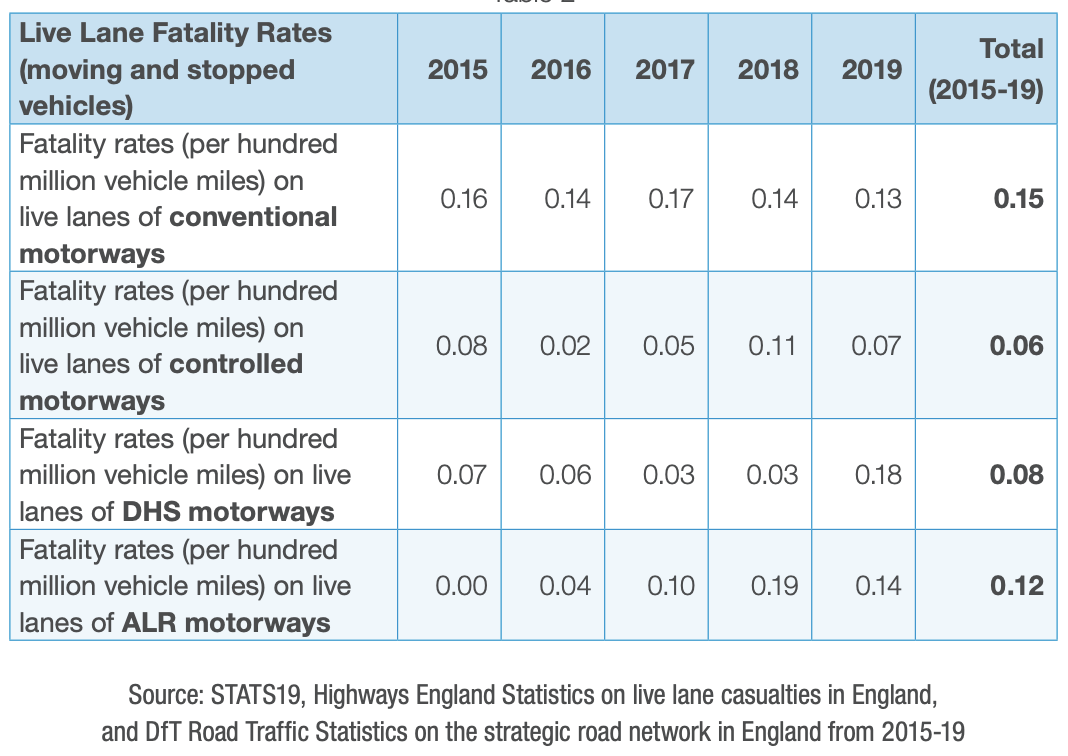
Over the five-year period, conventional motorways averaged 0.15 deaths per hundred million vehicle miles – more than ALR motorways (0.12), dynamic (0.08) and controlled (0.06) – although campaigners were quick to point out that the 2018 and 2019 figures were higher for ALR sections than for conventional motorways.
Department for Transport findings submitted in May 2021 to the MPs' Select Committee made a useful parsing of the figures, noting that "the risk of a live lane collision between a moving vehicle and a stopped vehicle is greater on ALR and DHS motorways" but that "the risk of a collision between two or more moving vehicles is lower."
In other words, changing the speed limit might reduce the chance of a shunt – but removing the hard shoulder increases the chance of hitting a stopped vehicle.
"It's highly unlikely that you can keep moving if you're having a bad enough problem on a motorway," says Claire Mercer, describing what are known in the data as 'live lane stops.' "If you can get out, then get as far away from the vehicle as possible.
"The question I get asked – and the first time I got asked it, it made me feel sick – people said to me, 'I've got two kids. Which one do I grab first?' It's not just you, it's whoever else you've got in the vehicle. Derek Jacobs was killed getting out of his vehicle. Nagis Bagum was killed trying to get over the crash barrier. David Levett had cerebral palsy and he didn't stand a chance."
Driving the ALR
In May 2023, to report for this story, CGTN's Elizabeth Mearns and Lucia Brienza drove the ALR section of the M3. They were not reassured by what they discovered.
"I was looking for information that we had entered an ALR smart motorway," said Mearns, who has 30 years' experience of driving. "I found the lack of warning signs that the hard shoulder had gone – and the blank signs overhead – confusing.
Mearns also worried about the crash barrier at the roadside, if a driver needed to exit the live lane with small children. "I don't know what you would do if you were a disabled driver, or had kids in the back of the car like I had – two babies in two car seats."
National Highways responded to these concerns. "Our electronic Variable Signs and Signals (VSS) at the roadside are used to warn about road conditions or situations (such as incidents & events)," their response read.
"It's not uncommon to encounter blank signs and signals on our motorway, particularly outside of peak travel periods when there is less congestion, traffic is flowing smoothly and there are no incidents."
The roadside crash barrier, the response explained, was designed as a safety feature rather than an obstacle: "Nearside barriers are provided to protect errant vehicles (and their occupants) from any hazards that exist on the verge, such as steep slopes. We have started work to assess the potential for the removal of nearside barriers where they are not required for safety purposes."
As for vulnerable drivers, they are advised to stay in the vehicle, keep seatbelts and hazard warning lights on, and call 999 immediately – advising the operator "if you're disabled and/or a vulnerable motorist such as an older person, or traveling alone." The emergency services will alert National Highways to "close motorway lanes and send other help as required, such as a Traffic Officer."

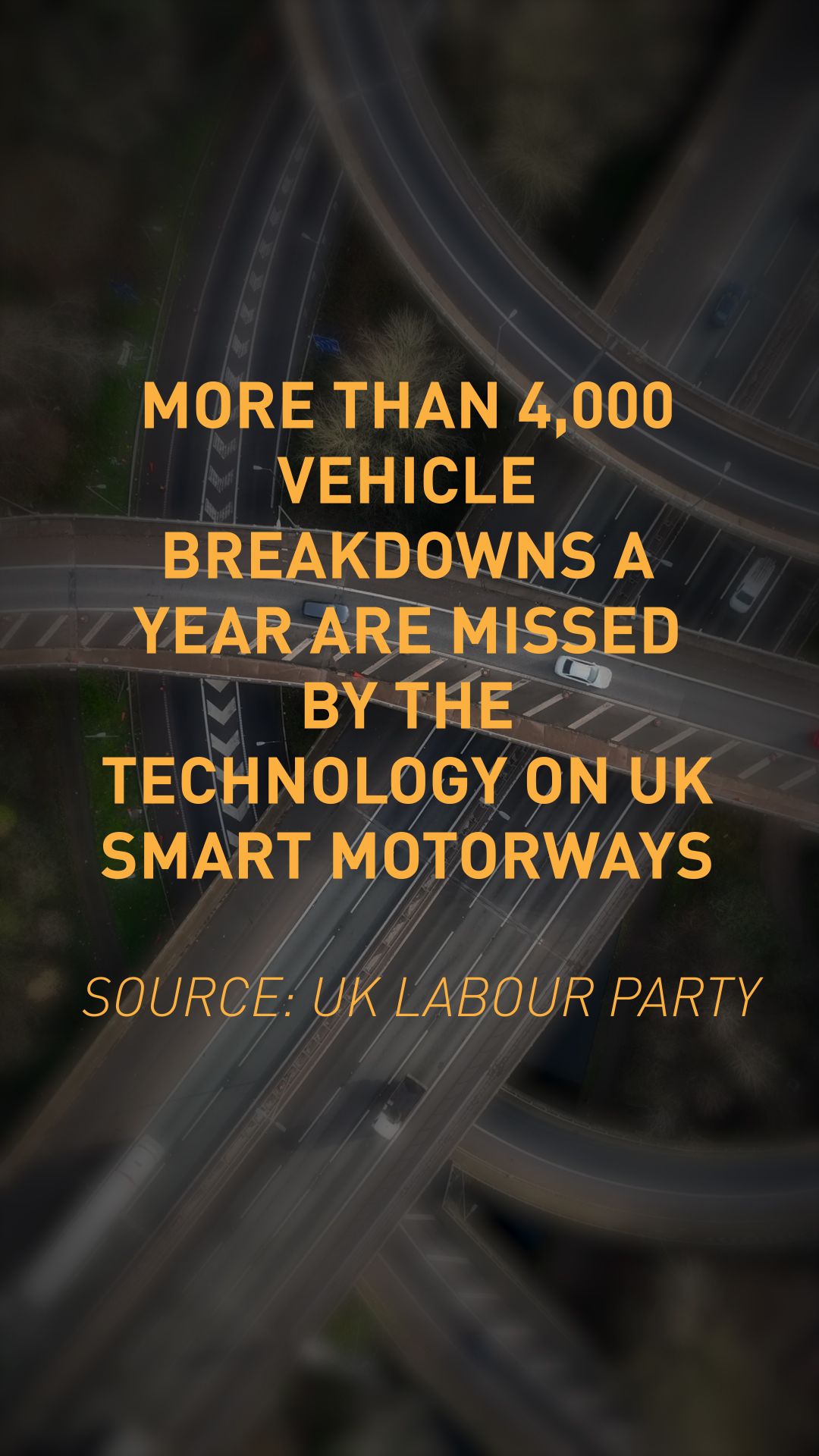
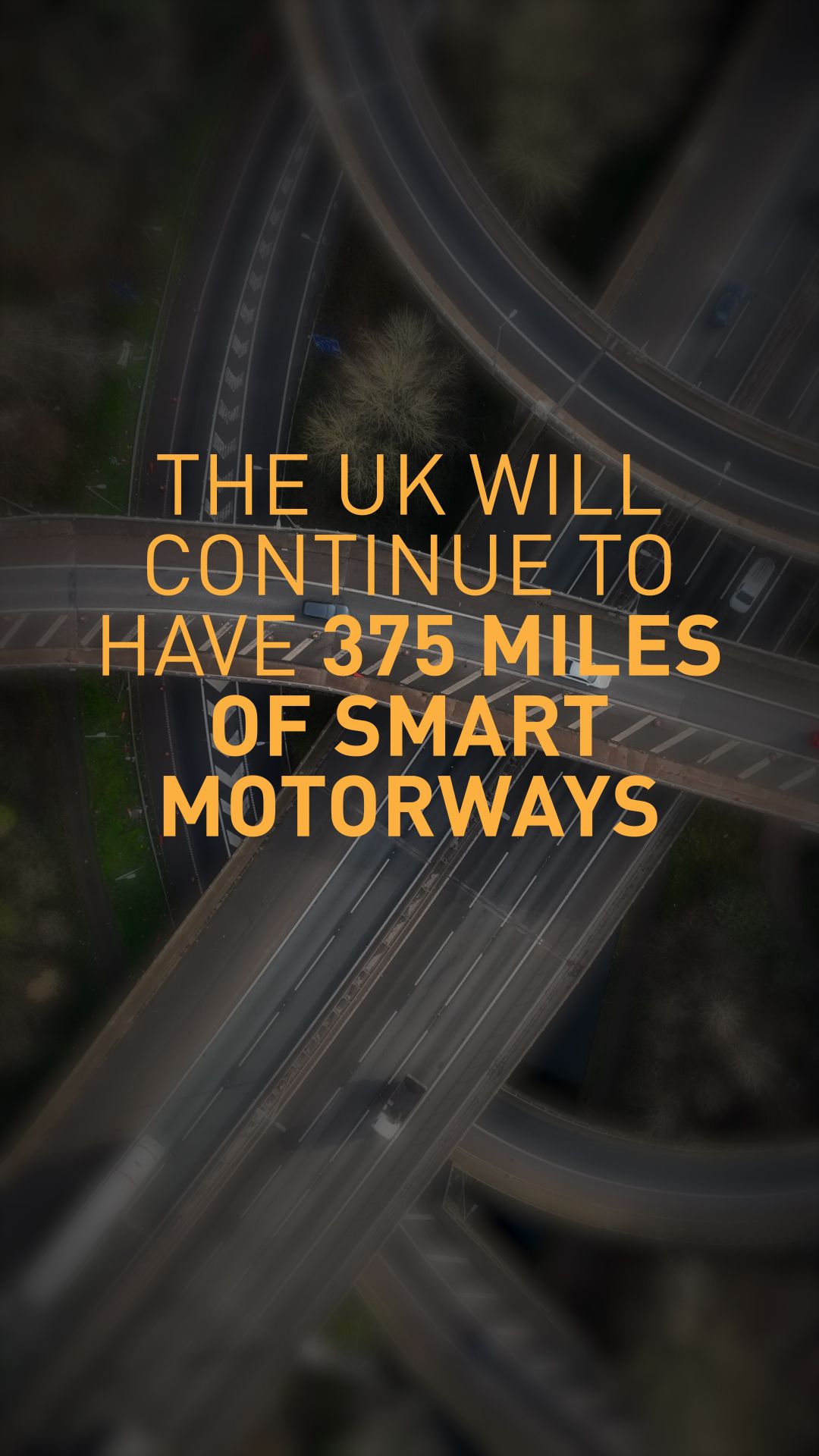
The future of smart motorways
In 2005, the year before the first smart motorway trial in Birmingham, Labour government's Transport Secretary Alistair Darling unveiled a much bigger idea: radical plans for a "pay-as-you-go" national road charging scheme, using what was described as the world's most ambitious satellite tracking system.
Empowered by a feasibility study suggesting such a scheme could reduce congestion by 40 percent with only 4 percent fewer cars on the road, and encouraged by a survey suggesting only 16 percent of motorists would object to carrying a 'black box' tracker in their vehicle, Darling suggested the technology could be an answer to congestion – but warned that it could take 15 years, and require political and public consensus.
Looking back from 18 politically divisive years later – years in which Brexit and a pandemic were bookended by two severe financial crises, the first centered on collapsing banks and the second on the spiraling cost of living – it's hard to imagine such an invasive scheme being a success. In the event, Labour lost the 2010 election, and the victorious Conservative-led coalition instead mandated the smart motorways experiment.
There's no doubt that technology could help achieve the holy grail of both reducing congestion and increasing safety. Overhead information displays can be of great use and importance: It can only be a good thing to warn motorists about upcoming situations – be that road-cloggingly heavy traffic or a broken-down disabled driver cowering in a live lane.
As we hurtle toward the future, we have to know the technology we depend upon is reliable. Sadly, during the ever-growing list of deaths during live-lane stops, lethal failures have been put down to human error as well as tech glitches.
Human error will never be reliably eliminated; it's possible (if expensive) to hire more pairs of eyes, but there could always be a slip. Meanwhile, the SVD radar technology that won the award in 2018 has also made mistakes - and when a vehicle is bearing down on you at 112 km/h, those mistakes can be deadly.
In the end, despite sometimes being portrayed as insulated from real life, politicians tend to listen to people. When UK PM Rishi Sunak halted the roll-out of ALR sections, he was bowing to an increasing feeling among the public that the system can be dangerous.
With no plans to reinstate the lost hard shoulders, Sunak's decision was more of an emergency stop than a U-turn, but with an election due by the end of 2024 he may soon find himself reversing. The Labour opposition, ahead in the polls, quickly claimed 4,000 vehicle breakdowns a year on smart motorways are missed by the technology and demanded the safety lane's reintroduction.
Transport Secretary Mark Harper's response that it would cost "billions of pounds" to reinstate the hard shoulder while maintaining traffic capacity may be accurate, but it's tin-eared when an RAC survey indicates that 7 out of 10 drivers – and therefore presumably voters – want the shoulders back. With pressure groups scenting victory, Harper may find that the expensive change suddenly becomes an election pledge.
"We will get the hard shoulder back," Claire Mercer tells CGTN with the sort of finality that brooks no argument. "And I'm sincerely hoping it's this year, because it's been four years since my husband was killed, and the number of people injured or killed since then is just going up and up and up."
ARE SMART MOTORWAYS SAFE?
Writers: Gary Parkinson, Elizabeth Mearns
Presenters: Elizabeth Mearns, Lucia Brienza
Animation: James Sandifer
Video Editors: James Sandifer, Thomas Triebel
